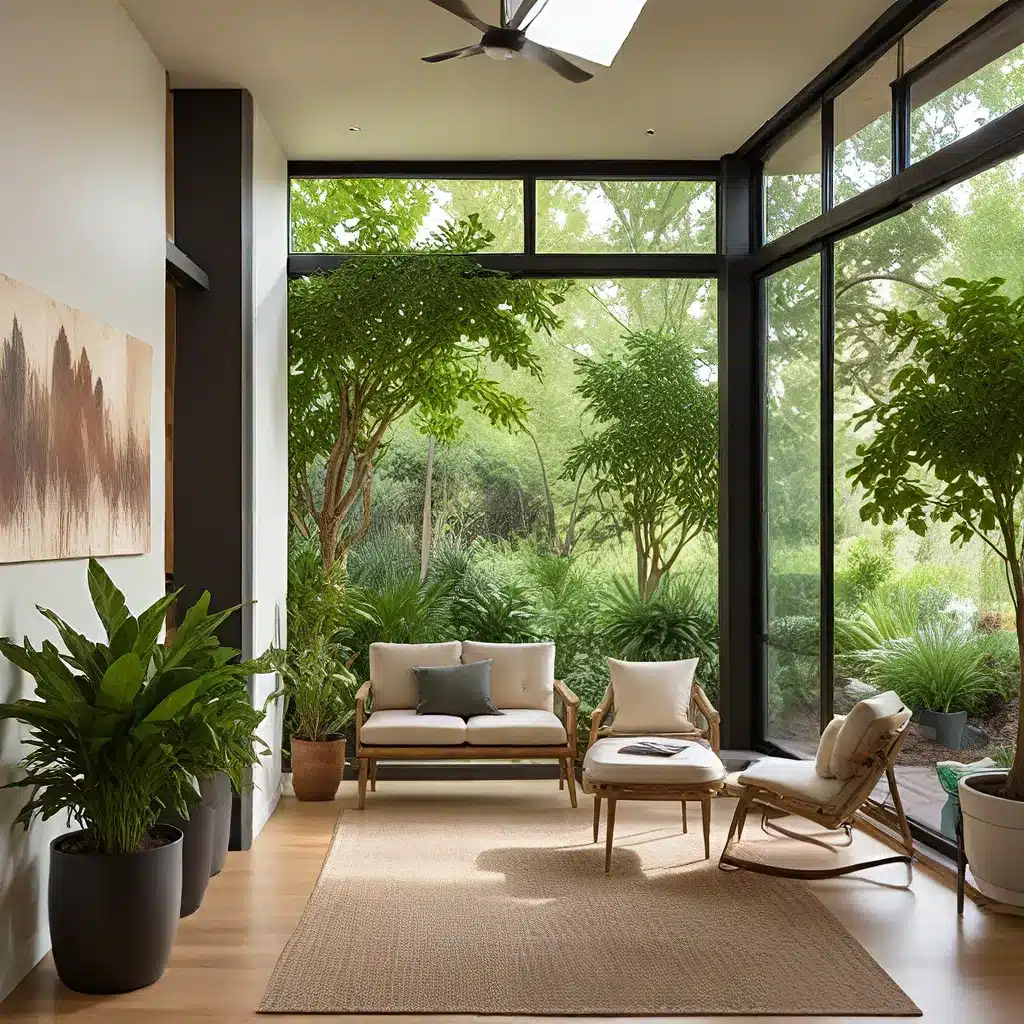
In a world where sustainability has become an essential consideration, the intersection of interior design and environmentally-conscious living has never been more crucial. As homeowners and design enthusiasts seek to create spaces that not only reflect their personal style but also prioritize the health of the planet, the demand for eco-friendly design solutions has steadily increased.
Embracing Sustainable Materials and Practices
One of the primary pillars of eco-friendly interior design is the selection of sustainable materials. From reclaimed wood and renewable fibers to low-VOC paints and recycled glass, the market is brimming with a wealth of options that cater to the environmentally-conscious consumer. By incorporating these materials into their designs, interior designers can reduce the carbon footprint of a project while still achieving a visually stunning and functional result.
Beyond the physical materials, embracing sustainable practices is equally essential. This includes prioritizing energy-efficient lighting, implementing water conservation strategies, and ensuring proper waste management during construction and renovation. Designers who are well-versed in these sustainable practices can guide homeowners through the process, empowering them to make informed decisions that align with their eco-friendly goals.
Harmonizing Design and Nature
The concept of biophilic design, which seeks to connect indoor spaces with the natural world, has gained significant traction in the realm of eco-friendly interior design. By incorporating elements like indoor plants, natural textures, and access to natural light, designers can create spaces that not only elevate the aesthetic but also provide tangible benefits to the occupants’ physical and mental well-being.
Moreover, the integration of living walls, green roofs, and other nature-inspired features can further enhance the environmental impact of a space. These elements not only beautify the interior but also contribute to improved air quality, temperature regulation, and storm water management, making them invaluable assets in the pursuit of sustainable living.
Space Planning for Efficiency and Functionality
Effective space planning is a crucial aspect of eco-friendly interior design, as it ensures the efficient use of resources and minimizes unnecessary waste. By carefully considering the layout, flow, and purpose of each room, designers can optimize the use of square footage, reduce energy consumption, and even facilitate water conservation through strategic placement of plumbing fixtures and appliances.
Moreover, a well-planned space can also promote sustainable behaviors, such as encouraging recycling, composting, and the use of energy-efficient appliances. By integrating these design elements seamlessly, interior designers can empower homeowners to adopt a more eco-conscious lifestyle without compromising the aesthetic appeal or functionality of their living spaces.
Elevating the Luxury of Sustainable Living
Contrary to the misconception that eco-friendly design is inherently austere or utilitarian, the truth is that sustainable living can be elevated to new heights of luxury and sophistication. By collaborating with skilled interior designers, homeowners can create personalized, high-end spaces that showcase the beauty and versatility of sustainable materials, while also incorporating the latest technological advancements in energy efficiency and smart home automation.
From the selection of artisanal, locally-sourced furnishings to the implementation of cutting-edge building systems, eco-friendly design can seamlessly blend form and function, resulting in spaces that are not only environmentally responsible but also exude an air of refined elegance and timeless appeal. This approach not only satisfies the homeowner’s aesthetic preferences but also demonstrates the possibility of achieving luxurious, sustainable living without compromise.
The Role of Interior Designers in Cultivating Conscious Comfort
As the demand for eco-friendly design continues to grow, the role of interior designers has become increasingly crucial in guiding homeowners through the process of creating sustainable living spaces. These design professionals possess the expertise to navigate the ever-evolving landscape of sustainable materials, building technologies, and green practices, ensuring that their clients can make informed decisions that align with their environmental values.
By collaborating with interior designers, homeowners can tap into a wealth of knowledge and resources, allowing them to explore the full potential of eco-friendly design. From the initial conceptualization to the final execution, these design professionals can help homeowners maximize the efficiency and functionality of their living spaces while seamlessly integrating luxury touches that elevate the overall aesthetic.
Moreover, interior designers can serve as advocates for sustainable living, educating their clients on the long-term benefits of eco-friendly design choices and empowering them to adopt a more conscious and responsible approach to their home environments. By fostering this collaborative partnership, homeowners can transform their living spaces into oases of conscious comfort that reflect their personal style and their commitment to a more sustainable future.
Embracing the Future of Eco-Friendly Interior Design
As the world continues to grapple with the pressing challenges of climate change and resource depletion, the importance of eco-friendly interior design can no longer be overstated. By embracing sustainable materials, implementing efficient design strategies, and harmonizing living spaces with the natural world, homeowners and design enthusiasts can play a vital role in shaping a more sustainable future.
Through the guidance and expertise of skilled interior designers, the dream of luxurious, sustainable living can become a reality. By collaborating with these professionals, homeowners can navigate the ever-evolving landscape of eco-friendly design, transforming their living spaces into personal sanctuaries that not only reflect their unique style but also contribute to the well-being of the planet.
As the demand for conscious comfort continues to rise, the future of interior design lies in the seamless integration of environmental responsibility and aesthetic excellence. By embracing this holistic approach, homeowners and design enthusiasts can cultivate living environments that not only enrich their daily lives but also inspire a broader societal shift towards a more sustainable and resilient future.

